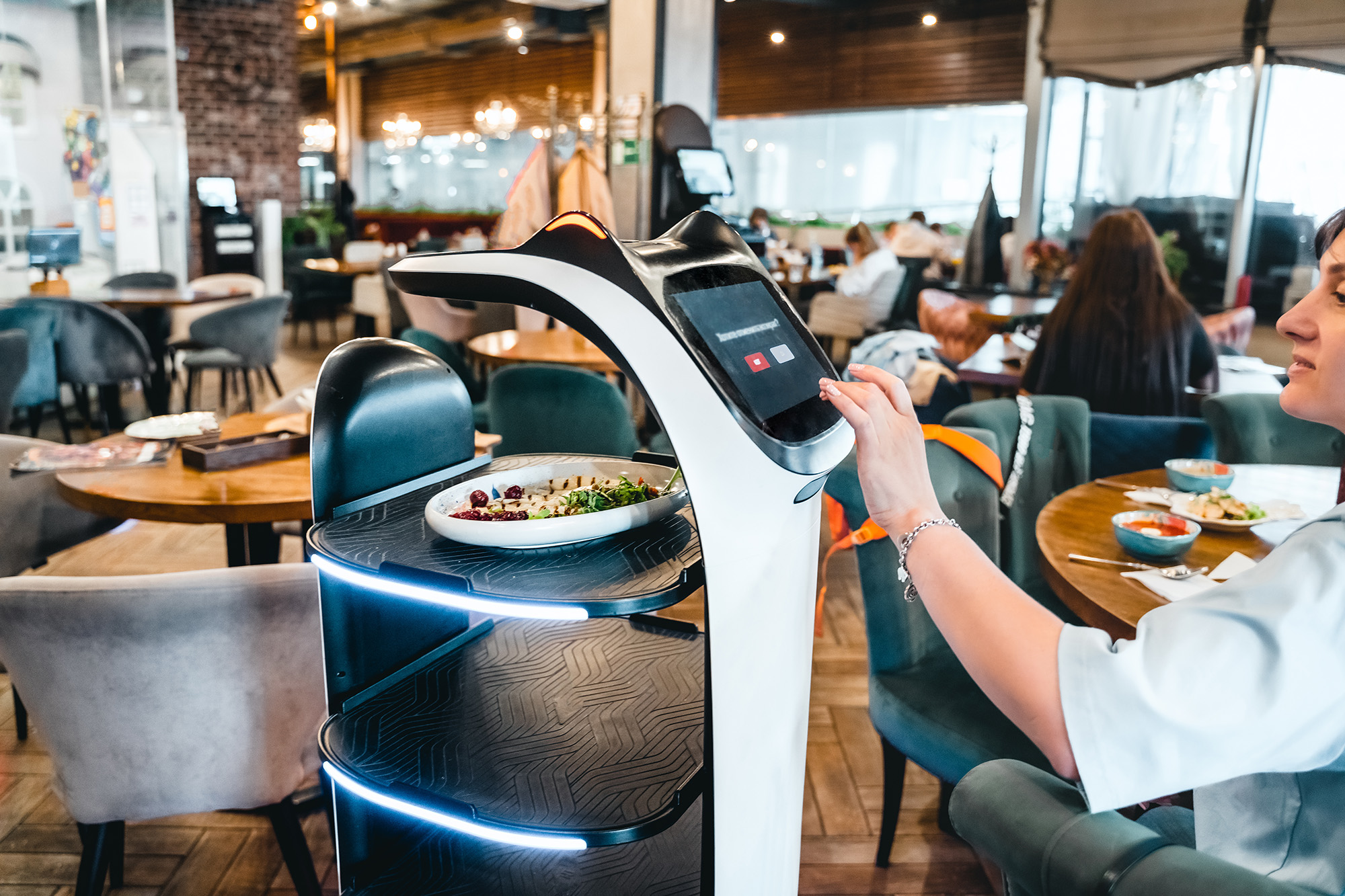 In the very near future, you may find yourself following a robot to your gate at an airport, or to the location of a book you’ve been trying to find in your local library. While quietly contemplating a painting at a museum, you may find a robot docent nearby, ready to provide information on the artist. While typing away at your desk, a robot office assistant may bring you a package you ordered. And when you enter a restaurant for dinner, you may follow a robot host to your table before being served by a robot waiter carrying your meal from the kitchen. In each of these cases, you’d be interacting with a service, communication, education, and entertainment robot.
In the very near future, you may find yourself following a robot to your gate at an airport, or to the location of a book you’ve been trying to find in your local library. While quietly contemplating a painting at a museum, you may find a robot docent nearby, ready to provide information on the artist. While typing away at your desk, a robot office assistant may bring you a package you ordered. And when you enter a restaurant for dinner, you may follow a robot host to your table before being served by a robot waiter carrying your meal from the kitchen. In each of these cases, you’d be interacting with a service, communication, education, and entertainment robot.
Read below to learn more about SCIEE robots and how UL Standards & Engagement is working to help companies and organizations roll them out safely with UL 3300, the Standard for Safety for Service, Communication, Information, Education and Entertainment Robots.
What is a SCIEE robot? What do SCIEE robots do?
 Service, communication, education, and entertainment robots operate in commercial use applications where ongoing operation of the robot does not require instructed or skilled human intervention during operation. SCIEE robots are intended to assist, inform, communication, educate or entertain users. They perform various tasks independently in public spaces and commercial spaces, such as restaurants, grocery stores, and banks – interacting with, and working alongside people to help increase convenience, customer service, and efficiency.
Service, communication, education, and entertainment robots operate in commercial use applications where ongoing operation of the robot does not require instructed or skilled human intervention during operation. SCIEE robots are intended to assist, inform, communication, educate or entertain users. They perform various tasks independently in public spaces and commercial spaces, such as restaurants, grocery stores, and banks – interacting with, and working alongside people to help increase convenience, customer service, and efficiency.
How does UL 3300 make SCIEE robots safer?
UL 3300 makes SCIEE robots safer by requiring them to be constructed so that in normal use and operating conditions (and foreseeable misuse), they cause no danger to persons or surroundings. In order to conform to the robotic safety standard, each SCIEE robot must meet its requirements and employ safeguards for categories including mobility, external manipulation, user classes and use surroundings, and fire and shock hazards.
- Mobility – Because SCIEE robots operate near and with people in public areas, the robotic safety standard classifies robots depending on height and mass, and requires speed limits, as well as object detection and avoidance requirements for each class.
- External manipulation – If equipped with jointed or sliding manipulators designed to grasp and/or slide objects, robots must not entrap an individual. Audible and/or visual indicators will signal if a person or object is in the intended operating area.
- Interaction with vulnerable persons – The robotic safety standard ensures that SCIEE robots are designed with consideration of individuals at greater risk of harm due to age, or physical or mental conditions or limitations. Because vulnerable persons could interact with the robot in unexpected ways, the standard requires that the robot respond appropriately to these interactions. Additionally, UL 3300 requires SCIEE robots to have audible and visual indicators, to notify vulnerable populations on their presence and path of movement.
- Fire and shock – SCIEE robots must not pose a risk of electric shock or fire hazard while mobile or stationary, including when charging batteries. In order to meet this requirement, batteries and cells shall comply with CSA C22.2 No. 62368-1/UL 62368-1, Equipment containing batteries and their protection circuits; UL/ULC 2580, Standard for Batteries for Use in Electric Vehicles; or UL/ULC 2271, Standard for Batteries for Use in Light Electric Vehicle (LEV) Applications.
How can I get involved in standards development?
ULSE standards are developed through a consensus-based process, which integrates scientific and testing expertise with input from our technical committee members and stakeholders. TC members represent a variety of interests, including industry, academia, government, retail, and manufacturing. If you would like to help improve safety in your industry, please take a moment to learn how you can get involved.